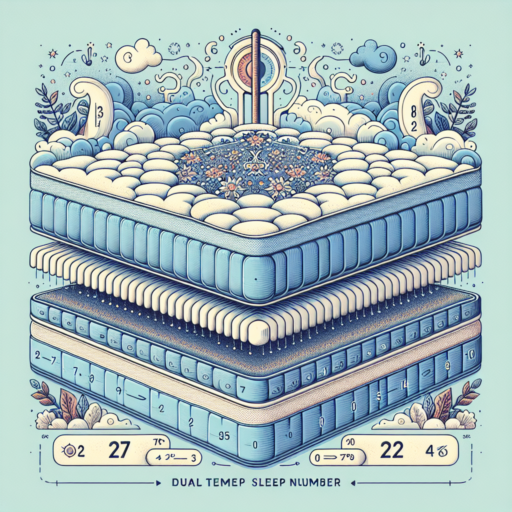Is light sleep considered good sleep?
Understanding the quality of sleep can be a complex issue, often leading to the question: Is light sleep considered good sleep? Light sleep, or stage 2 non-REM sleep, plays a critical role in our sleep architecture. It acts as a bridge between deep sleep and REM sleep, contributing to the process of memory consolidation and physical recovery. However, assessing its value requires a closer look at its characteristics and how it fits into the broader context of sleep health.
During light sleep, our body begins to slow down, with decreases in heart rate, breathing, and brain activity. This phase is paramount for cognitive functions and overall physical health. It prepares the brain and body for deeper sleep stages that are crucial for repairing tissues, strengthening the immune system, and regenerating cells. While individual needs vary, adults generally spend about 50% of their sleep time in this lighter sleep phase, highlighting its significance in the sleep cycle.
It’s essential to recognize that while light sleep is indeed a vital component of a healthy sleep pattern, the quality of sleep also hinges on the balance and transition between different sleep stages. An excess or deficiency in light sleep can indicate disruptions in sleep quality, potentially leading to sleep disorders or diminished alertness and performance during waking hours. Therefore, tracking sleep patterns, including the amount of light sleep, can provide valuable insights into overall sleep health and well-being.
What is the best sleep stage?
Understanding the best sleep stage is crucial to enhancing the quality of your sleep, and, by extension, your overall health. Sleep is not just a single, uniform block of time; it consists of several stages, each serving a different purpose. These stages are part of what is known as the sleep cycle, which we cycle through several times a night.
REM vs. Non-REM Sleep
The sleep cycle consists of Rapid Eye Movement (REM) and Non-REM phases. Non-REM sleep is further divided into three stages: light sleep (Stage 1 and Stage 2) and deep sleep (Stage 3). While REM sleep is often celebrated for its role in dreaming and memory consolidation, each stage of sleep plays a vital role in our health. Deep sleep, the third stage of Non-REM sleep, is particularly noteworthy for its physical restorative functions.
In answering what the best sleep stage is, it’s essential to recognize the importance of deep sleep. This stage is the most rejuvenating, allowing for tissue repair, growth, and overall energy restoration. It’s also a key player in strengthening the immune system, making it a cornerstone of a good night’s rest. However, the value of a balanced sleep cycle, wherein all stages are adequately experienced, cannot be overstated.
No se han encontrado productos.
What is light sleep vs deep sleeper?
Understanding the distinction between light sleep and being a deep sleeper is crucial for grasping how sleep impacts our overall health and well-being. Light sleep, or more technically, the first and second stages of the sleep cycle, is characterized by the ease with which one can be awakened. This phase is essential for relaxation and preparing the body for deeper sleep stages.
In contrast, deep sleep refers to the third stage of the sleep cycle, where the body enters a state of significant physical restoration. During this phase, the body repairs tissue, builds bone and muscle, and strengthens the immune system. Deep sleepers, those who spend a greater portion of their night in this restorative stage, tend to wake up feeling more refreshed and rejuvenated.
Differences in Brain Activity
- In light sleep, brain waves begin to slow down compared to wakefulness, but there are still moments of activity that make it easy to be woken up.
- During deep sleep, brain wave activity slows dramatically, showing large waves known as delta waves, which are associated with deep restorative sleep.
Recognizing these distinctions helps in understanding personal sleep patterns and emphasizing the importance of achieving a balance between light and deep sleep for optimal health.
What are the 5 stages of sleep?
Understanding the 5 stages of sleep is crucial for comprehending how our bodies rest and recover. Sleep might seem like a uniform state of rest, but it actually consists of several distinct stages, each playing a vital role in our overall health and well-being.
The first stage is a light sleep phase where one can be easily awakened. It’s the transition period from wakefulness to sleep, lasting several minutes, during which the body begins to relax. The second stage serves as a slightly deeper sleep; here, our heart rate slows, and body temperature decreases. It’s a preparatory phase for deeper sleep, taking up approximately 50% of the sleep cycle.
The Deep and REM Sleep Stages
Moving into the third and fourth stages, we encounter deep, restorative sleep. These stages are crucial for physical recovery, memory consolidation, and hormonal regulation. It is during these stages that the body repairs muscles and tissues, boosts immune function, and builds energy for the next day.
The fifth stage, known as Rapid Eye Movement (REM) sleep, is where most dreaming occurs. It’s marked by increased brain activity, rapid eye movements, and muscle paralysis (to prevent acting out dreams). This stage is essential for cognitive functions such as memory, learning, and creativity. Each of these five stages cycles several times throughout the night, offering a blend of restorative and cognitive benefits that are key to holistic health.




